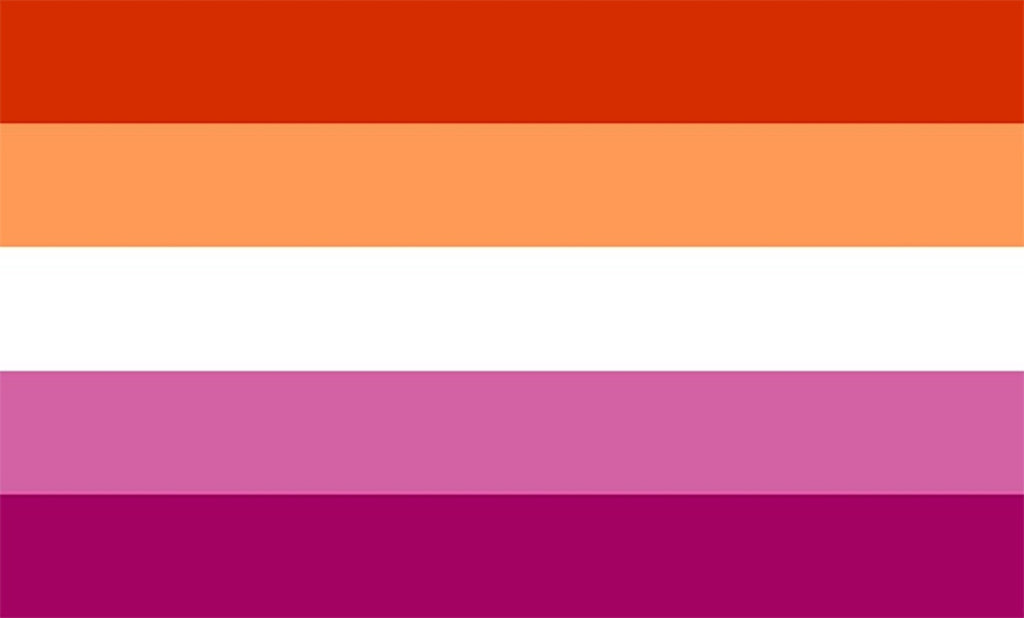

Elements: Stripes of red, pink, orange, and white. Even a later iteration of this lesbian flag – the one that doesn’t have the gigantic kiss mark on the top left – did not gain much traction because of this convoluted history. Therefore, having a flag dedicated solely to lipstick lesbians seemed to be an additional affront to the butch community.įurthermore, designer McCray was said to have posted racist, biphobic, and transphobic comments in her now-deleted blog. Within the lesbian community, lipstick lesbians are considered to be in a privileged position because they usually pass as straight women, and can, therefore, evade those who persecute and discriminate against those who are openly gay. For starters, the lipstick lesbian flag innately excludes ‘butch lesbians’ or those who have completely abandoned traditional ‘girl’ clothes and attributes. However, this may just be the most frowned-upon lesbian flag, especially for LGBT members who value intersectionality and solidarity with other identity groups and minority sects. 
The stripes represent various shades of lipstick, and the huge kiss mark on the top left is pretty self-explanatory. McCray got quite literal with the imagery of this flag.
Criticized because: It’s perceived as butch-exclusive, and its creator made hateful comments about other LGBT identity groupsįirst published on McCray’s The Lesbian Life blog in 2010, this flag represents a particular sub-community composed of lipstick lesbians – women who celebrate their femininity by wearing traditional ‘girl clothes’ and sporting makeup. Elements: Stripes of red, white, several shades of pink, and a pink kiss mark on the top left. Representation is a big deal for members of the LGBT community, so others felt like if an official lesbian flag would exist, it should have been made by a lesbian. Strong imagery aside, some members of the lesbian community found it difficult to relate to a flag created by someone who is not only from outside the identity group but is also a man. The ancient symbol of matriarchal power was adopted by lesbians, who, according to gay studies expert Rachel Poulson, valued the example of Amazons as strong, brave, women-identified women. Right smack in the middle of the purple flag is an inverted black triangle, which is a reclamation of the symbol used by Nazis in their concentration camps to identify homosexuals.įinally, the most iconic part of this particular flag: the labrys, a double-headed axe that finds roots in Crete mythology as a weapon that only accompanies women warriors (Amazons) and not male gods. 
The purple background is a nod to lavenders and violets being used in history and literature as a euphemism for homosexuality, which began when Abraham Lincoln’s biographer channeled the poetry of Sappho in describing the former president’s intimate male friendships as spots soft as May violets, and friendships containing a streak of lavender.

Criticized because: It didn’t come from within the communityĬampbell, a homosexual male graphic designer, came up with this design while working on a special Pride edition of the Palm Springs Gay and Lesbian Times, which was published in 2000.Elements: Purple base, inverted black triangle, a labrys.Violets (and the lavender-ish color) - Sga women used to give violets to whom they were wooing, symbolizing their ‘sapphic’ desire.įull pride gallery HERE! FAQ and “dictionary” of genders, orientations, and other related terms HERE.
#LESBIAN FLAG PINK MOD#
Here’s two more versions that aren’t super HQ because I can’t enlarge actual drawingssss ĭesigned by: lesbeux-moved (simplification by Mod Hermy) Originates from the Greek poet Sappho, a bisexual woman from the Isle of Lesbos, from which we get the term lesbian. Applies to lesbian, pansexual, bisexual, and other women(-aligned) who are sexually/romantically attracted to women(-aligned). Sapphic: Referring to women or woman-aligned NB people who are sexually and/or romantically attracted to other women(-aligned) people.








 0 kommentar(er)
0 kommentar(er)
